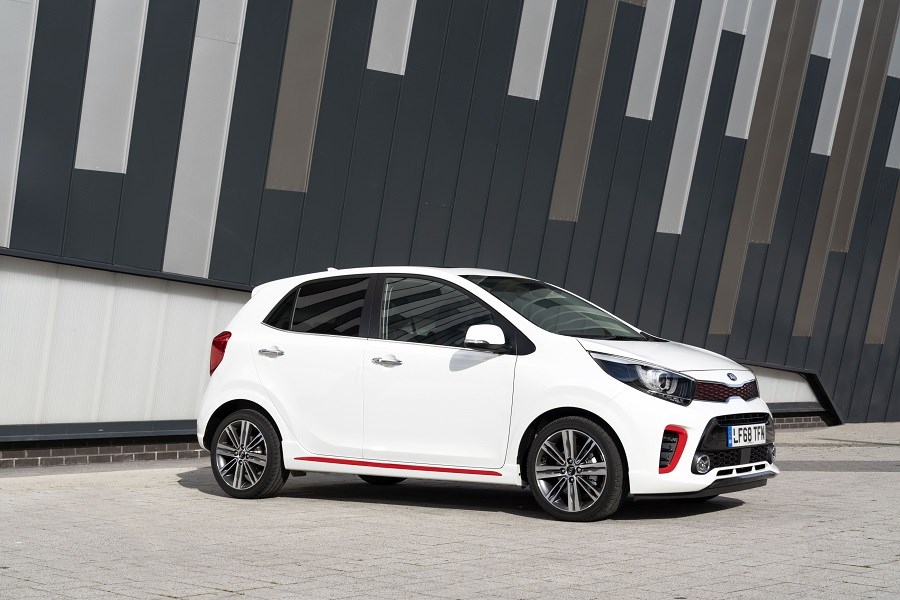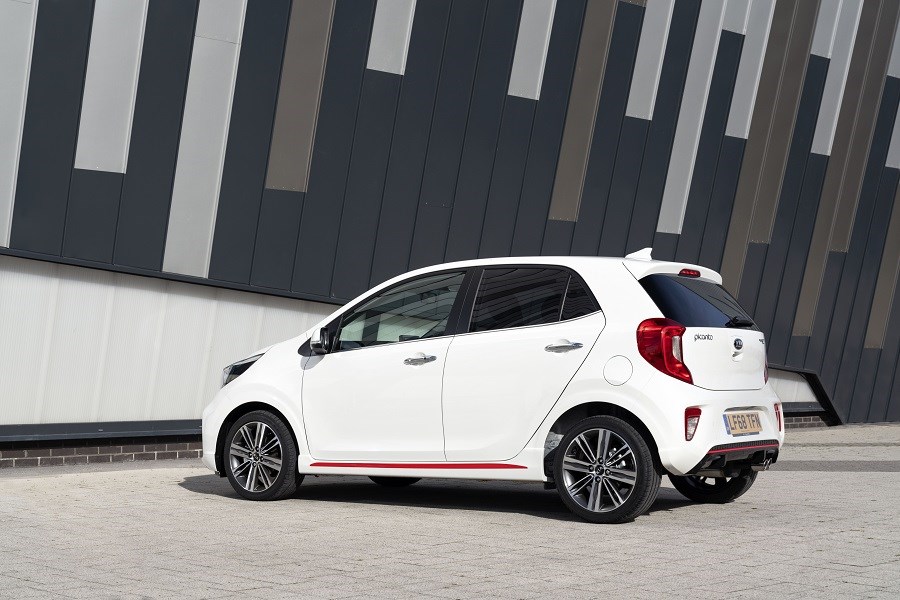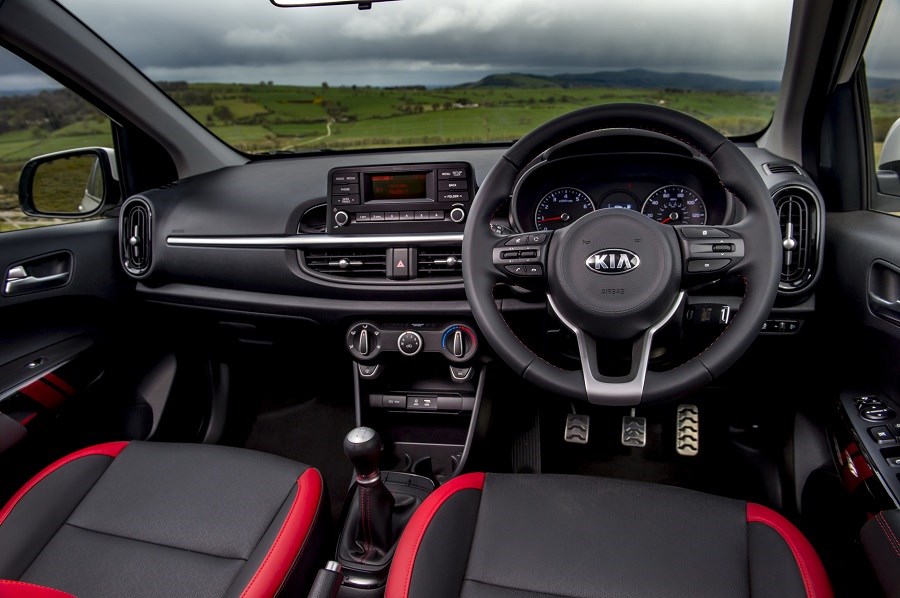Latest model
Despite only being unveiled in 2017, Kia has already made a number of adjustments and additions to the Picanto.
The first change was the addition of the ‘X-Line’ trim model. This version was created in response to the hugely lucrative crossover market. While the Picanto isn’t a crossover, it adds SUV styling to the model to give it further appeal. Chunkier bumpers feature on the X-Line, with silver skidplates. Lime green detailing also appears on the X-Line, with these details appearing on the front grille and fog light surrounds, as well as on the interior. In typical crossover fashion, the X-Line also features plastic wheelarch cladding. A high-spec X-Line S model is also offered.
The second change was the introduction of a turbocharged 1.0-litre petrol unit to the line-up. This is a 99bhp engine — the same as available in the larger Rio supermini—and adds a fresh dose of character to the model. It’s certainly the pick of the engine range.
Value for money
The Picanto isn’t the bargain it once was in the city car market, although it’s a far more accomplished car now than it always used to be.
New Picanto prices start from £9,720, which doesn’t get you a great deal of equipment, although automatic lights, a trip computer and remote locking are included for the price which is more than what you would find on similarly-priced rivals. The ‘2’ specification is the best pick, with this model adding 14-inch alloys, air-conditioning, Bluetooth and a leather steering wheel and gearstick.
Early Picantos are priced from under £1,000, although the latest model costs from under £7,000, which is a good chunk off the list price. It’s not a model which depreciates too heavily though. Around £7,000 will get you a 2017 model in entry level ‘1’ trim, with around 10,000 miles on the clock. Add £500 to this if you would prefer a well-specced ‘2’ version. Nearly-new versions aren’t too much more, either.
Looks and image
The latest Picanto is certainly a better-looking model than the version it replaces, although entry-level trim levels can look rather uninspiring. The standard-fit daytime running lights and ‘tiger nose’ grille look stylish, although it’s not a model brimming with flair. GT-Line and X-Line versions are the best-looking models in the range, with 16-inch alloy wheels, LED daytime running lights and LED rear lights adding a bit of extra flair to the Picanto.
A lot of effort has been made by Kia to improve the quality of the cabin, and you can tell. The material quality is rather good for an affordable city car, with plenty of durable plastics dotted around the cabin. There’s not a lot of soft plastics and leather, but you shouldn’t forget that this isn’t intended to be a luxury model. The look of the interior has also improved, with not too many buttons and a ‘floating’ seven-inch touchscreen featuring on all but the ‘1’ and ‘2’ specs. Sadly, the lack of an infotainment system on these models makes the cabin look rather dated.
It might not look it, but the Picanto is a good car to drive. The light yet sharp steering almost gives the steering a ‘go-kart-feel’, which makes nipping about quite a lot of fun. It also handles well and grips to the road with limited body lean. The main downfall has always been the rather gutless petrol engines, although the addition of the new turbocharged petrol engine has transformed the model. Our only other gripe with the way it drives, is that the ride can be quite firm around town - although this is often a trait of city cars.





